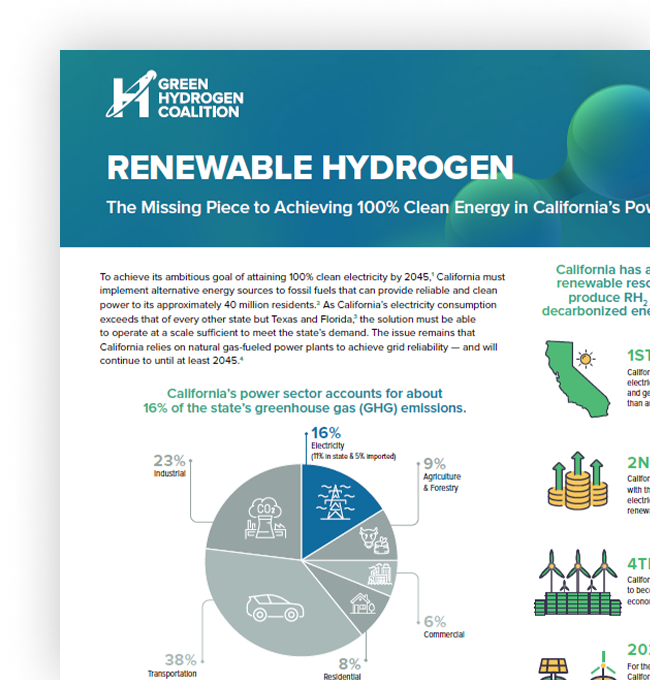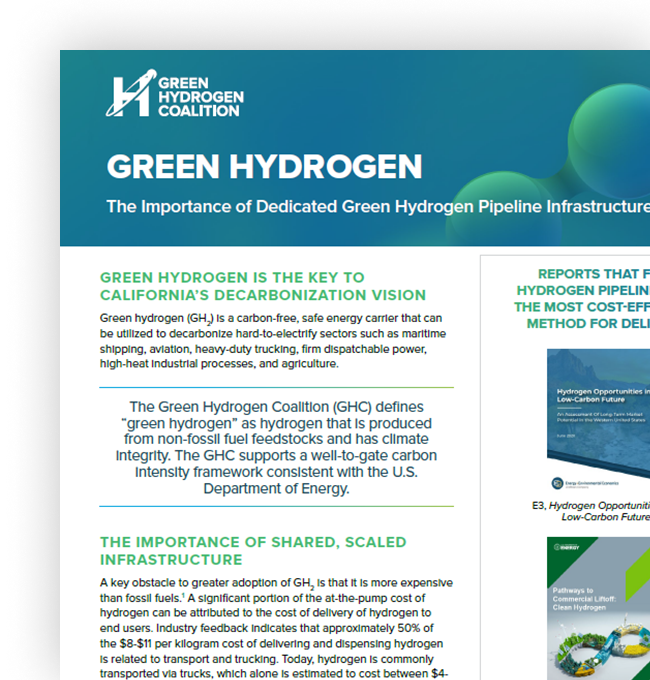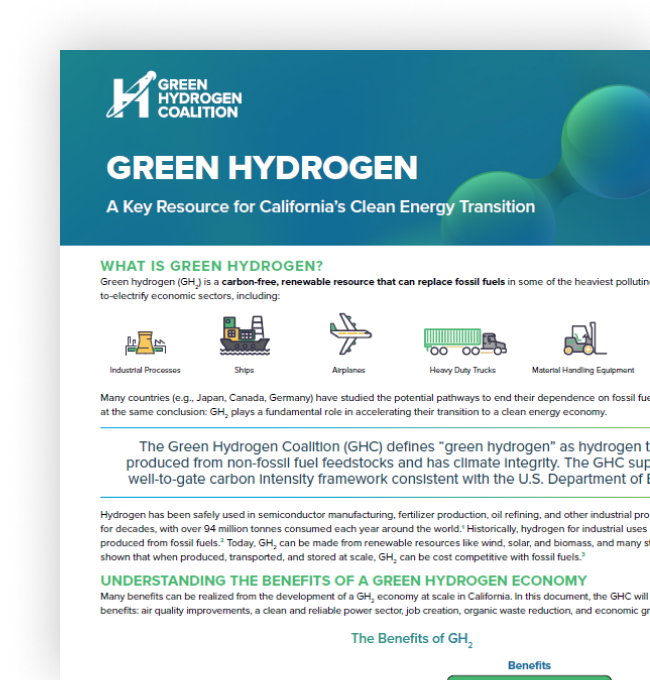GREEN HYDROGEN
A Key Resource for California’s Clean Energy Transition
WHAT IS GREEN HYDROGEN?
Green hydrogen (GH2) is a carbon-free, renewable resource that can replace fossil fuels in some of the heaviest polluting and hardest-to-electrify economic sectors, including:
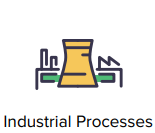




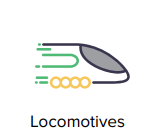
Many countries (e.g., Japan, Canada, Germany) have studied the potential pathways to end their dependence on fossil fuels and arrived at the same conclusion: Green hydrogen plays a fundamental role in accelerating their transition to a clean energy economy.
The Green Hydrogen Coalition (GHC) defines “green hydrogen” as hydrogen that is produced from non-fossil fuel feedstocks and has climate integrity. The GHC supports a well-to-gate carbon intensity framework consistent with the U.S. Department of Energy.
UNDERSTANDING THE BENEFITS OF A GREEN HYDROGEN ECONOMY
Many benefits can be realized from the development of a green hydrogen economy at scale in California. In this document, the GHC will highlight 5 key benefits: air quality improvements, a clean and reliable power sector, job creation, organic waste reduction, and economic growth potential.
The Benefits of Green Hydrogen
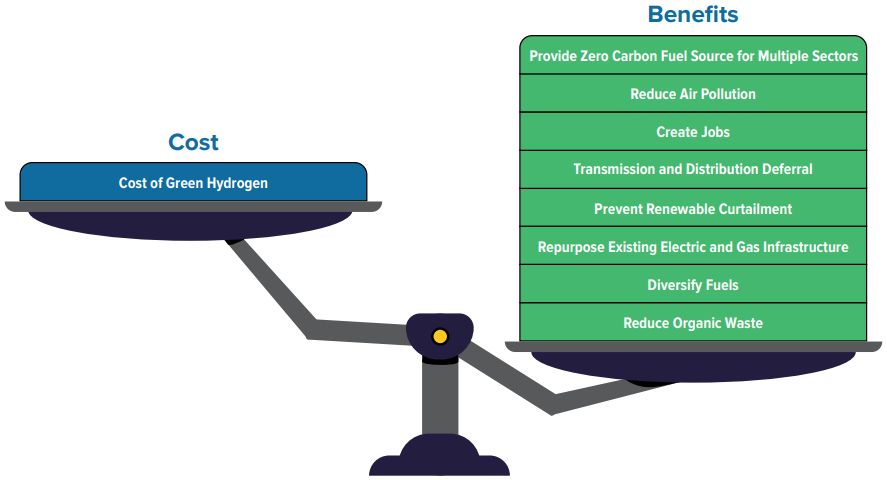
1 | Green hydrogen can replace fossil fuels in hard-to-electrify mobility applications, leading to significant air quality and public health improvements.
 Learn more about the pollution reduction benefits of green hydrogen adoption. Check out the GHC’s HyBuild LA Report, which features a UC Irvine study on the atmospheric impacts within the South Coast Air Basin of replacing fossil fuel combustion technology with hydrogen fuel cells.
Learn more about the pollution reduction benefits of green hydrogen adoption. Check out the GHC’s HyBuild LA Report, which features a UC Irvine study on the atmospheric impacts within the South Coast Air Basin of replacing fossil fuel combustion technology with hydrogen fuel cells.
2 | Green hydrogen can be a source of long-duration energy storage, enabling California to achieve its 100% renewable electricity goal while maintaining grid resiliency.
As the portfolio of renewable energy continues to grow, it is essential to balance its output and variability, as some months and seasons will have excess renewable energy, whereas others will fall short to meet energy needs. Today, excess renewable energy production is not utilized. Production of green hydrogen creates the opportunity to capture wind and solar and store it for weeks, months, and even seasons to be used when needed.
By utilizing green hydrogen as a zero-carbon, on-demand power source, California’s electric sector can end its dependence on natural gas. Further, this can be done affordably by reusing existing power sector infrastructure. Without utilizing this clean, reliable resource, California will continue to be dependent on fossil fuels.
Excess Renewable Energy That is Not Utilized Increases Each Year
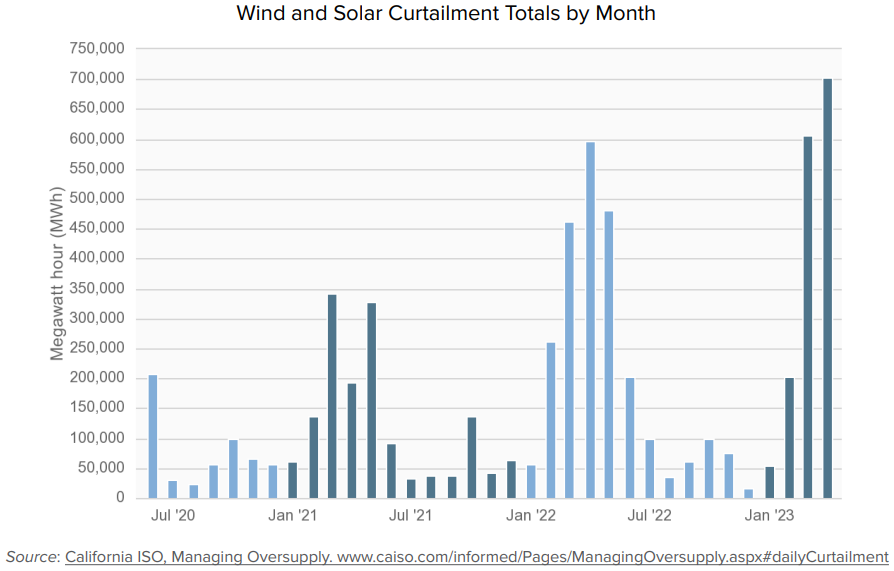
3 | Establishing a green hydrogen economy in California will create tens of thousands of familysustaining jobs.
Permanent Job Creation to Serve California’s Green Hydrogen Demand
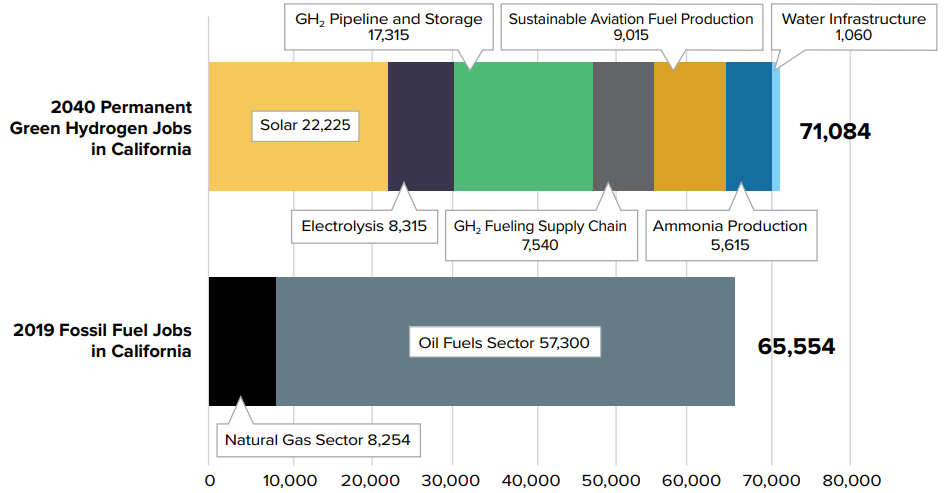
Fossil Fuel Jobs Source: California Energy and Employment Report (CAEER), 2020. ww.energy.ca.gov/filebrowser/download/2272
Green Hydrogen Jobs Source: Adapted from UC Irvine Advanced Power and Energy Program for HyBuild LA, 2022. A multiplier is applied to LA green hydrogen job estimates to scale to statewide levels. www.ghcoalition.org/ghc-news/hybuild-la-phase-2-report.
“Adding hydrogen to our state’s energy portfolio is not only an important step in decarbonizing the state, but will also foster green careers for thousands throughout California.”
— Lorena Gonzalez, Executive Secretary-Treasurer of the California Labor Federation
4 | California law requires the state to divert 75% of its organic waste away from landfills by 20257 – but where will it go? Producing green hydrogen from organic waste can reduce short-lived climate pollutants and help to solve California’s waste problem.
5 | Green hydrogen can position California to be a powerhouse in the global clean energy market.
Green hydrogen and its derivatives can support the decarbonization of maritime shipping and aviation sectors. As home to the largest ports in the U.S. (Port of LA and Long Beach) and one of the country’s busiest airports (LAX), California can further demonstrate its climate leadership by establishing some of the world’s busiest clean transit routes.
California Can Export Green Hydrogen to Fuel the Global Energy Transition
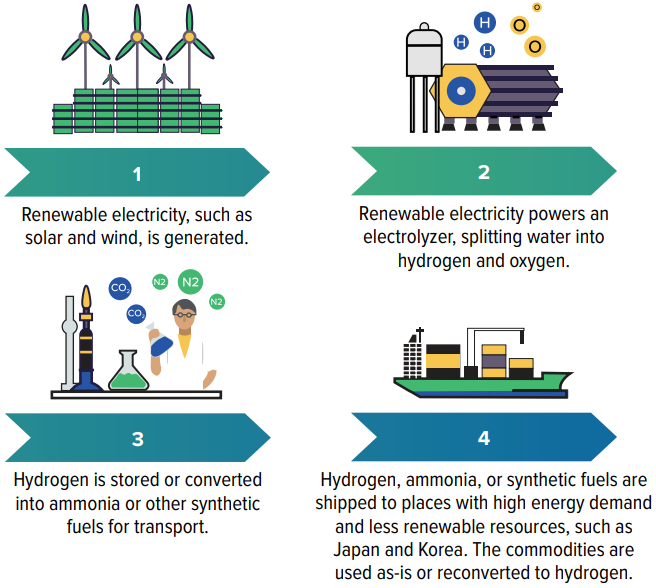
Resources:
- Bermudez, Jose M., et al. “Hydrogen.” IEA, https://www.iea.org/reports/hydrogen. Accessed 9 May 2023.
- U.S. Department of Energy. n.d. “Hydrogen Resources.” Accessed on June 8, 2023. https://www.
energy.gov/eere/fuelcells/hydrogen-resources. - “Hydrogen.” n.d. International Energy Agency. Accessed May 31, 2023. https://www.iea.org/fuelsand-technologies/hydrogen.
- https://afdc.energy.gov/vehicles/emissions_hydrogen.html.
- Green Hydrogen Coalition. 2023. “Hybuild LA Phase 2 Report.” https://ghcoalition.org/s/GHCHyBuild-LA-Phase-2-Report.pdf.
- California Air Resources Board, “Emissions Projections by Summary Category.”
- State of California. “California’s Short-Lived Climate Pollutant Reduction Strategy.” CalRecycle Home Page, https://calrecycle.ca.gov/organics/slcp/. Accessed 9 May 2023.
- “Organic Materials Management.” CalRecycle Home Page, https://calrecycle.ca.gov/organics/. Accessed 9 May 2023.
- “Overview of Greenhouse Gases.” Environmental Protection Agency (EPA), https://www.epa.gov/ghgemissions/overview-greenhouse-gases. Accessed 9 May 2023.
- “Black Carbon.” Climate & Clean Air Coalition, https://www.ccacoalition.org/en/slcps/black-carbon. Accessed 9 May 2023.
- “Methane and Climate Change – Global Methane Tracker 2022 – Analysis.” IEA, https://www.iea.org/reports/global-methane-tracker-2022/methane-and-climate-change. Accessed 9 May 2023.
- Ibid.
- Buis, Alan, and NASA’s Jet Propulsion Laboratory. “The Atmosphere: Getting a Handle on Carbon Dioxide.” Climate Change: Vital Signs of the Planet, 9 Oct. 2019, https://climate.nasa.gov/news/2915/the-atmosphere-getting-a-handle-on-carbon-dioxide/.
- “Importance of Methane.“ Environmental Protection Agency (EPA), https://www.epa.gov/gmi/ importance-methane. Accessed 9 May 2023.
- Ibid.
- Source: U.S. Department of Energy. “U.S. National Clean Hydrogen Strategy and Roadmap.” Accessed June 7, 2023. https://www.hydrogen.energy.gov/pdfs/us-national-clean-hydrogenstrategy-roadmap.pdf
- Nakano, Jane. “Japan’s Hydrogen Industrial Strategy.” Center for Strategic and International Studies, 21 Sept. 2022, https://www.csis.org/analysis/japans-hydrogenindustrial-strategy

